Okinawan Dance
& Music Heritage
Elements of Dance Costumes
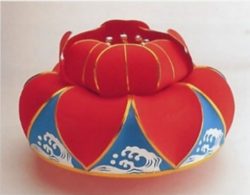
Hanagasa – floral headdress
This headdress with its red floral-shaped design and blue wave patterns has come to serve as a symbol of Okinawa. Its brilliance enhances the festive quality of dance such as Yotsutake, while in Nufa Bushi it represents in a highly concentrated form the female spirit as manifest in romantic love.
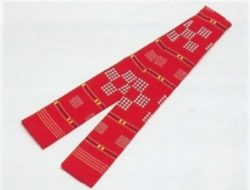
Hanazumi Tiisaji – woven figured cloth
The hanazumi tiisaji is a length of figured cloth woven by a woman as a token of her affection for a man. In Hanafu, it is employed as a symbol of profound love, while in Munjuru it represents innocent affection.
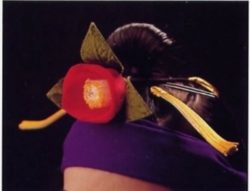
Kamuro – Ryukyuan-style hair arrangement
This is the distinctive hair style worn by performers of classical onna odori (women''s dances). An artificial flower is placed at the centre in front of the chignon. Each side is decorated with stiff tassels (noshi and basara). A long purple headband (nagasaji) is placed between the hair and the forehead and trails down the dancer's back.
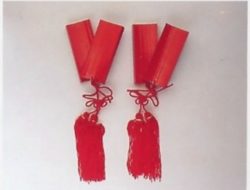
Yotsutake – castanets
The yotsutake is an idiophone which serves to mark out the rhythm in the dances in which it is used. Consisting of two pieces of bamboo linked by a cord to which tassels are attached, it emits a sharp percussive sound. The yotsutake is always used in two pairs, one held in each hand.
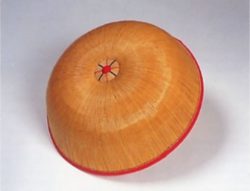
Munjuru – straw hat
This rustic straw hat with its unadorned, rectilinear beauty symbolizes the sincere feelings of a peasant girl. In Munjuru, one of the masterpieces of the zo odori genre, the song text suggests that the hat has been made by the girl's sweethear; the hat is used to great effect in this dance.
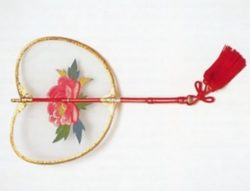
To uchiwa – Chinese-style frame fan
The Chinese-style frame fan is held by performers of female roles in such classical dances as Chikuten Bushi and Kajadifu. Held in the right hand, its soft contours enhance the beauty of the movements of the dancer's left hand.
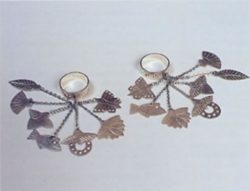
Fusa yubiwa – ring
Worn mainly in classical onna odori dances, this ring adds to the beauty especially of those dances performed without hand props. The ring is adorned with tassels in the forms of fish birds and fans. The slight movement of the ring in tranquil dances such as Shudun and Amakawa greatly enhances the atmosphere generated by the performance.
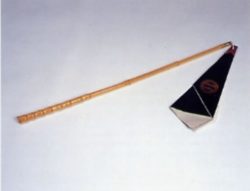
Zei – pennon
The origins of the zei lie in the pennons used by Japanese generals during battle to raise the morale of their troops and to transmit signals. However, in Okinawa the zei is devoid of any military significance and is considered a symbol of peace and purification.
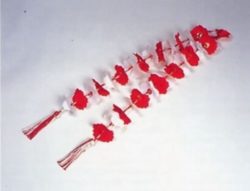
Nuchibana – garland
Nuchibana is a garland made of red and white flowers. The implication is that the dancer has picked spring blossoms and threaded them to create a garland to hand around the neck of her sweetheart. The interconnected flowers of the nuchibana symbolize the inseverable bonds of love.
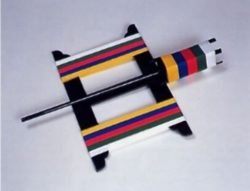
Kase and waku – spool and frame
Spinning and weaving were formerly important tasks for Okinawan women, and the spool and frame used for winding thread were thus essential tools. The vividly colored spool and frame held in both hands by the dancer of Kashiaki represent the subtle stirrings of the female heart.




